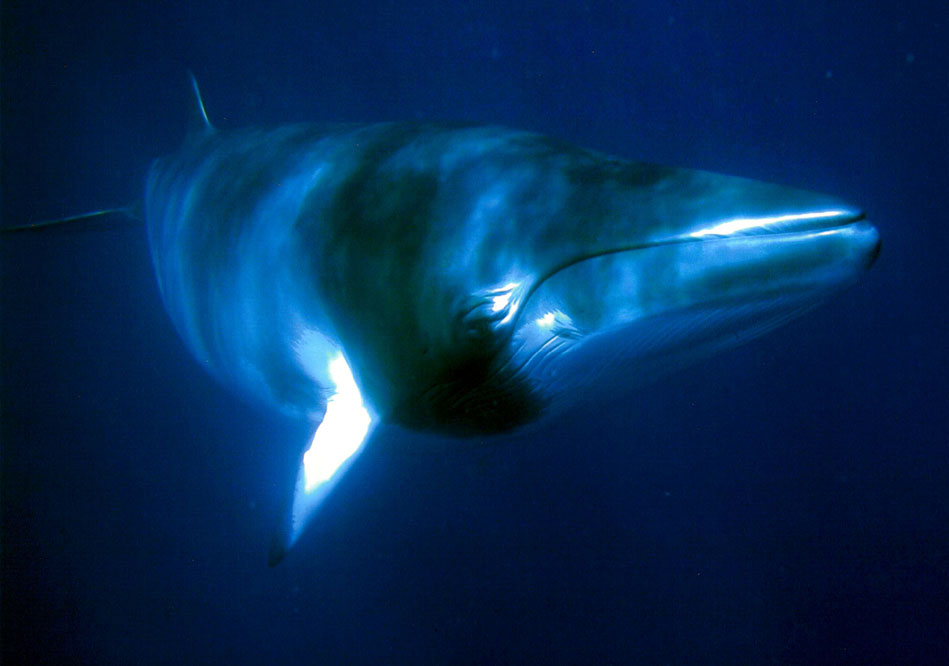https://www.youtube.com/watch?v=9I3aevk5Ll4
Where do Minke whales fit into the whale family tree?
The minke whale is the smallest baleen whale with 50-70 throat grooves. It is a rorqual whale (baleen whale with throat grooves). They are the most abundant baleen whale (world wide population estimated to be close to 800 000). Minke whales have a characteristic white band on each flipper, contrasting with its very dark gray top color. They have 2 blowholes, like all baleen whales. Other baleen whales are humpbacks and right whales.
What do they feed on?
Minke whales (like all baleen whales) are seasonal feeders and carnivores. They sieve through the ocean water with their baleen. They filter out small plankton, krill and small fish, even chasing schools of sardines, anchovies, cod, herring, and capelin. They have the same diet as blue whale (largest member of the baleen whales). The baleen plates in the minke whale’s jaws have about 300 pairs of short, smooth baleen plates. The largest plates are about less than 30 cm long and 13 cm wide. The fine textured baleen bristles are fringed and are creamy-white with pure white bristles.
Where do dwarf minke whales fit in to the picture?
Dwarf minke whales were first recognised as a distinct form in the mid 1980s and there is still little known about them. They attracted attention in northern Great Barrier Reef waters because they are naturally inquisitive, and often come close to boats and swimmers.
The dwarf minke whale is known only from the Southern Hemisphere. It has a white shoulder and flipper base, with a dark grey tip on the flipper. Unlike the Antarctic minke whale, it has a large dark patch extending onto the throat. Female dwarf minkes are on average about two metres shorter than Antarctic minkes (in baleen whales, the female is larger than the male). The largest dwarf minke whale that was accurately measured was 7.8 m long; adults weigh 5 to 6 tonnes.
Dwarf minke whales are most commonly seen on the outer reefs of the Great Barrier Reef between the months of March and October, with the best viewing time being the June to July period.
A new tourism industry has developed in recent years, where permitted operators take tourists out to specifically swim with these animals, based on voluntary approaches by the whales. Marine biologists are focusing their research efforts on why dwarf minke whales conduct these interactions. The bottom line is – don’t swim to the whale, let the whale swim to you!


